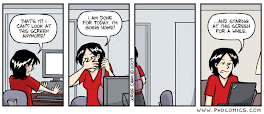I suggest to you read this article. Surely you will solve many questions about why some people watch 3D movies without any problem and others feel uncomfortable or can not watch them.
This visual problem can be solve easily with vision therapy in many cases (except in strabismus, amblyopia, monovision or monocular vision).
OTHER LINKS
Don't be startled if 'Avatar' makes you nauseated
Avatar 3-D Images Help to Identify Vision Problems










